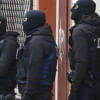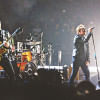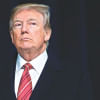PARIS ATTACKS: Massive intelligence and security failure?
As the smell of gunpowder slowly recedes from the air over Paris, many questions start to crowd the minds of analysts across the world, from "what happened?" it is now time to ask "how did it happen?" Was such an attack coming France's way since France joined the western coalition to take part in air strikes on IS strongholds in Syria? With the memory of the bloodbath at Charlie Hebdo not yet totally faded, it was expected that the French intelligence would install the best possible monitoring system available in the world to take preemptive action against terrorist groups targeting France. But, all such assumptions were proved wrong with the attacks in Paris on November 13.
What baffles us is, how could about a dozen heavily armed terrorists drive all the way to Paris from Belgium or some other place near the capital without having been checked at any point by the security personnel on either side of the border? Against the background of heightened security alert with the rise of IS, that many people with assault weapons, explosives and suicide belts tied around their waist entered the heart of Paris, walked into a café and stadium to carry out the mayhem seems like an intelligence and security nightmare. The assailants had to fire hundreds of rounds of bullets, changing empty magazines in the process, to kill 128 and injure over 300 hundred people, most of whom had been running wildly or taking shelter under tables, chairs and behind doors. Those were not easy targets to fire at. So, how long does it take to fire so many rounds of bullets at moving targets? Where were the armed policemen all this time? Why did they come only after so many casualties?
More questions come to our minds as we try to analyse the tragic events that unfolded that day. At least two men in all black went scarily close to the stadium where the president of France was watching a football game, and they detonated the suicide bomb. Here again the question arises: where was the Presidential special security squad? If most of them were inside the stadium, where were the rest? Were not some of them positioned outside?
Some reports and analyses appearing in international media inform us that French intelligence agencies have been monitoring the movements of some suspicious groups – possible terrorists – expecting some kind of attack at any time. We believe this readiness has been reinforced after the attack at Charlie Hebdo last January. But, when a dozen young people with arms and explosives approached them, they failed to intercept before they could pull the trigger.
Yes, most of the assailants had been killed by the police eventually, but that was possible because they came with a one-way ticket. What if about a hundred of them came with a similar mission? If we analyse the nature of the attacks and their near-perfect execution, we are inclined to believe that the level of preparedness of the French intelligence and police on the ground has been dismal. The intelligence agencies have reports that nearly 4000 trained IS commandoes have entered Europe in the guise of refugees. That is not comforting news for countries that are involved in air strikes over IS strongholds in Syria and Iraq. If true, surely the commandoes have not gone there to watch a game of football! They expressed their bloody intent, possibly as a sample, in the Paris attacks on November 13. World leaders will have to recalculate the pros and cons now without losing much time, especially the threats already issued by IS about attacking other targets in Europe and America.
The writer is Special Supplements Editor, The Daily Star.

 For all latest news, follow The Daily Star's Google News channel.
For all latest news, follow The Daily Star's Google News channel. 








Comments